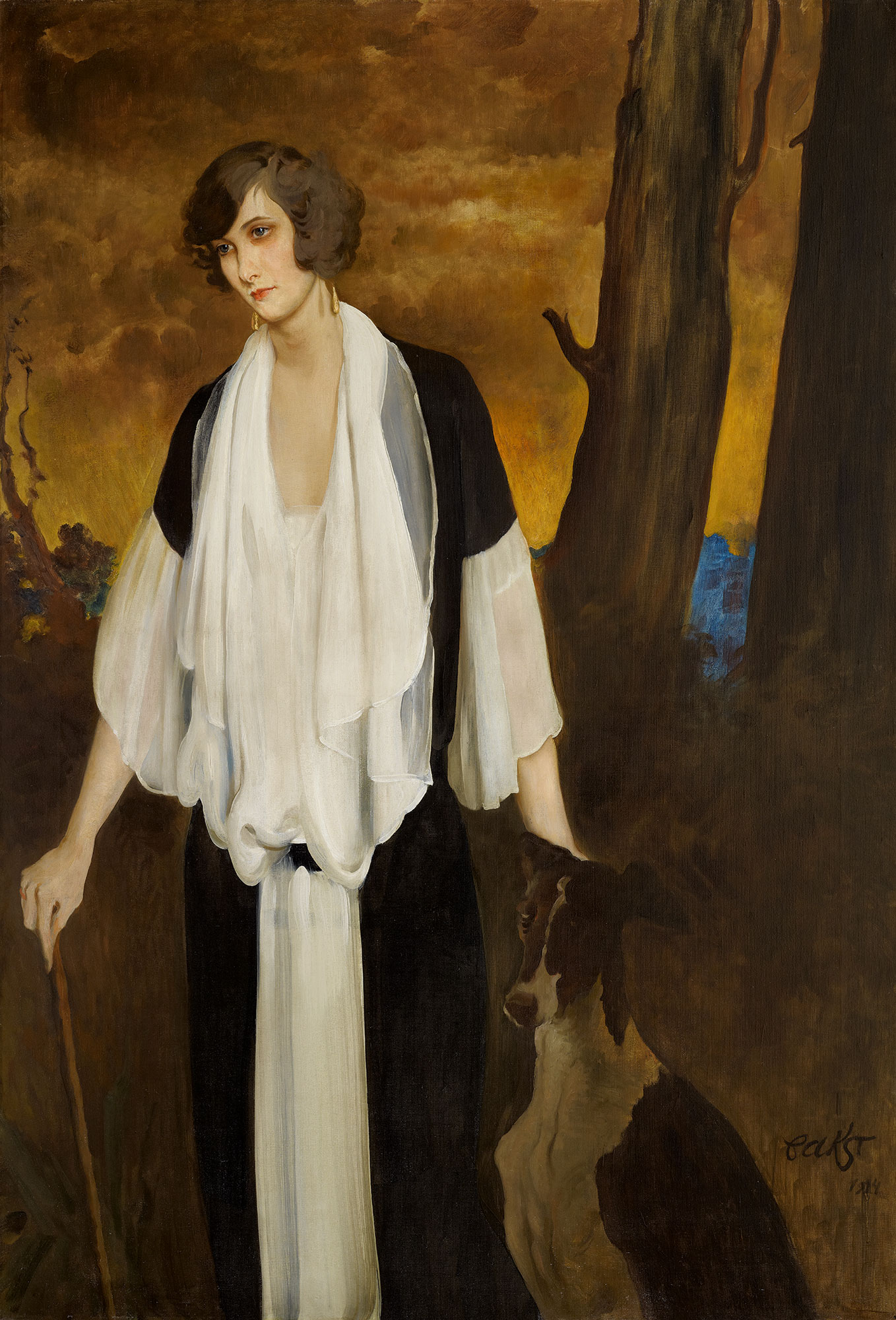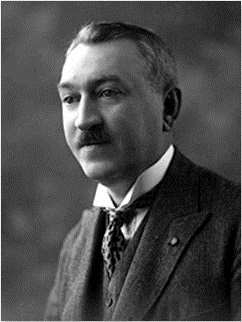|
Alexandre Benois
Alexandre (Alexander) Nikolayevich Benois (; Salmina-Haskell, Larissa. ''Russian Paintings and Drawings in the Ashmolean Museum''. pp. 15, 23-24. Published by Ashmolean Museum, 19899 February 1960) was a Russian artist, art critic, historian, preservationist and founding member of '' Mir iskusstva'' ("World of Art"), an art movement and magazine.Owen, Bobbi. ''Costume Design on Broadway: Designers and Their Credits, 1915-1985''. p. 19 Greenwood Press: New York, 1987 As a designer for the Ballets Russes under Sergei Diaghilev, Benois exerted what is considered a seminal influence on the modern ballet and stage design. Early life and education Alexandre was born into the artistic and intellectual Benois family, prominent members of the 19th- and early 20th-century Russian intelligentsia. His mother Camilla (Russian: Камилла Альбертовна Кавос, and then Бенуа) was the granddaughter of Catterino Cavos. His father was Nicholas Benois, a Russian archite ... [...More Info...] [...Related Items...] OR: [Wikipedia] [Google] [Baidu] |
Léon Bakst
Léon (Lev) Samoylovich Bakst (), born Leyb-Khaim Izrailevich Rosenberg (; – 27 December 1924),"Bakst, Leon" by Maarten Wurfbain, in ''The Dictionary of Art'' (Grove Press, 1998) p.86"Bakst Lev Samoilovich" by V. A. Kulakov, ''Great Russian Encyclopedia'' online was a Russian painter and scene and er of Jewish origin. He was a member of the |
Intelligentsia
The intelligentsia is a status class composed of the university-educated people of a society who engage in the complex mental labours by which they critique, shape, and lead in the politics, policies, and culture of their society; as such, the intelligentsia consists of scholars, academics, teachers, journalists, and literary writers. Conceptually, the intelligentsia status class arose in the late 18th century, during the Partitions of Poland (1772–1795). Etymologically, the 19th-century Polish intellectual Bronisław Trentowski coined the term (intellectuals) to identify and describe the university-educated and professionally active social stratum of the patriotic bourgeoisie; men and women whose intellectualism would provide moral and political leadership to Poland in opposing the cultural hegemony of the Russian Empire. Before the Russian Revolution, the term () identified and described the status class of university-educated people whose cultural capital (schooling, ... [...More Info...] [...Related Items...] OR: [Wikipedia] [Google] [Baidu] |
Tsarskoye Selo
Tsarskoye Selo (, , ) was the town containing a former residence of the Russian House of Romanov, imperial family and visiting nobility, located south from the center of Saint Petersburg. The residence now forms part of the Pushkin, Saint Petersburg, town of Pushkin. Tsarskoye Selo forms one of the World Heritage Site Historic Centre of Saint Petersburg and Related Groups of Monuments, Saint Petersburg and Related Groups of Monuments. The town bore the name Tsarskoye Selo until 1918. The new Bolshevik government of Soviet Russia renamed it as Detskoye Selo (), which it held from 1918–1937. At that time, it was renamed under Josef Stalin, Stalin's government as Pushkin () after Alexander Pushkin, the famous Russian poet and writer. It is still known by that name. History The area of Tsarskoye Selo, once part of Swedish Ingria, first became a Russian royal/imperial residence in the early 18th century as an estate of the Empress-consort Catherine (later Empress-regnant as Cath ... [...More Info...] [...Related Items...] OR: [Wikipedia] [Google] [Baidu] |
Monograph
A monograph is generally a long-form work on one (usually scholarly) subject, or one aspect of a subject, typically created by a single author or artist (or, sometimes, by two or more authors). Traditionally it is in written form and published as a book, but it may be an artwork, audiovisual work, or exhibition made up of visual artworks. In library cataloguing, the word has a specific and broader meaning, while in the United States, the Food and Drug Administration uses the term to mean a set of published standards. Written works Academic works The English term ''monograph'' is derived from modern Latin , which has its root in Greek. In the English word, ''mono-'' means and ''-graph'' means . Unlike a textbook, which surveys the state of knowledge in a field, the main purpose of a monograph is to present primary research and original scholarship. This research is presented at length, distinguishing a monograph from an article. For these reasons, publication of a monograph ... [...More Info...] [...Related Items...] OR: [Wikipedia] [Google] [Baidu] |
Aesthetic Movement
Aestheticism (also known as the aesthetic movement) was an art movement in the late 19th century that valued the appearance of literature, music, fonts and the arts over their functions. According to Aestheticism, art should be produced to be beautiful, rather than to teach a lesson, create a parallel, or perform another didactic purpose, a sentiment expressed in the slogan " art for art's sake." Aestheticism flourished in the 1870s and 1880s, gaining prominence and the support of notable writers such as Walter Pater and Oscar Wilde. Aestheticism challenged the values of mainstream Victorian culture, as many Victorians believed that literature and art fulfilled important ethical roles. Writing in ''The Guardian'', Fiona McCarthy states that "the aesthetic movement stood in stark and sometimes shocking contrast to the crass materialism of Britain in the 19th century." Aestheticism was named by the critic Walter Hamilton in ''The Aesthetic Movement in England'' in 1882. B ... [...More Info...] [...Related Items...] OR: [Wikipedia] [Google] [Baidu] |
Pavel Tretyakov
Pavel Mikhaylovich Tretyakov (; 27 December 1832 – 16 December 1898) was a Russian businessman, patron of art, collector, and philanthropist who gave his name to the Tretyakov Gallery and Tretyakov Drive in Moscow. His brother Sergei Tretyakov was also a famous patron of art and a philanthropist. Career in business Together with other Moscow businessmen he acted as the founder of the Moscow Merchant Bank (becoming one of its heads), the Moscow commercial and industrial company, some other large firms. He amassed a considerable fortune (4.4 million rubles), consisting of real estate (5 houses in Moscow), securities, money and bills. Collecting art Tretyakov started to collect art in 1854 at the age of 22; his first purchase was 10 canvases by Old Dutch masters. He laid down for himself the aim of creating a Russian National Gallery. In his collection Tretyakov included the most valuable and remarkable products, first of all the contemporaries, from 1870 - mainly membe ... [...More Info...] [...Related Items...] OR: [Wikipedia] [Google] [Baidu] |
Louis XIV Of France
LouisXIV (Louis-Dieudonné; 5 September 16381 September 1715), also known as Louis the Great () or the Sun King (), was King of France from 1643 until his death in 1715. His verified reign of 72 years and 110 days is the List of longest-reigning monarchs, longest of any monarch in history. An emblem of the Absolutism (European history), age of absolutism in Europe, Louis XIV's legacy includes French colonial empire, French colonial expansion, the conclusion of the Thirty Years' War involving the Habsburgs, and a controlling influence on the Académie royale de peinture et de sculpture, style of fine arts and architecture in France, including the transformation of the Palace of Versailles into a center of royal power and politics. Louis XIV's pageantry and opulence helped define the French Baroque architecture, French Baroque style of art and architecture and promoted his image as absolute ruler of France in the early modern period. Louis XIV began his personal rule of France ... [...More Info...] [...Related Items...] OR: [Wikipedia] [Google] [Baidu] |
Watercolor Painting
Watercolor (American English) or watercolour (Commonwealth English; see spelling differences), also ''aquarelle'' (; from Italian diminutive of Latin 'water'), is a painting method"Watercolor may be as old as art itself, going back to the Stone Age when early ancestors combined earth and charcoal with water to create the first wet-on-dry picture on a cave wall." in which the paints are made of pigments suspended in a water-based solution. ''Watercolor'' refers to both the medium and the resulting artwork. Aquarelles painted with water-soluble colored ink instead of modern water colors are called (Latin for "aquarelle made with ink") by experts. However, this term has now tended to pass out of use. The conventional and most common support—material to which the paint is applied—for watercolor paintings is watercolor paper. Other supports or substrates include stone, ivory, silk, reed, papyrus, bark papers, plastics, vellum, leather, fabric, wood, and watercolor canvas ... [...More Info...] [...Related Items...] OR: [Wikipedia] [Google] [Baidu] |
Versailles (city)
Versailles ( , ) is a commune in the department of the Yvelines, Île-de-France, known worldwide for the Château de Versailles and the gardens of Versailles, which is designated an UNESCO World Heritage Sites. Located in the western suburbs of the French capital, from the centre of Paris, Versailles is a wealthy suburb of Paris with a service-based economy and is a major tourist destination. According to the 2017 census, the population of the city is 85,862, down from a peak of 94,145 in 1975.Population en historique depuis 1968 , INSEE A new town founded by order of King , Ve ... [...More Info...] [...Related Items...] OR: [Wikipedia] [Google] [Baidu] |
Baba Yaga By Alexandre Benois
Baba and similar words may refer to: Places Poland * Baba, Masovian Voivodeship (east-central Poland) * Baba, Mogilno County in Kuyavian-Pomeranian Voivodeship (north-central Poland) * Baba, Rypin County in Kuyavian-Pomeranian Voivodeship (north-central Poland) * Baba, Greater Poland Voivodeship (west-central Poland) Romania * Baba, a village in Horea Commune, Alba County, Romania * Baba, a village in Coroieni Commune, Maramureș County, Romania * Baba, a tributary of the river Ghelința in Covasna County, Romania * Baba, a tributary of the river Putna in Vrancea County, Romania Other countries * Achi Baba (Turkish: Alçıtepe), a height dominating the Gallipoli Peninsula in Turkey, located in Çanakkale Province * Baba mountain range, also known as ''Koh-i-Baba'', in the Hindu Kush of Afghanistan * Baba Bakala, a historical town and tehsil in the Amritsar district in Punjab, India * Baba Canton, a canton in Los Ríos Province, Ecuador * Baba, Iran, a villag ... [...More Info...] [...Related Items...] OR: [Wikipedia] [Google] [Baidu] |
Saint Petersburg State University
Saint Petersburg State University (SPBGU; ) is a public research university in Saint Petersburg, Russia, and one of the oldest and most prestigious universities in Russia. Founded in 1724 by a decree of Peter the Great, the university from the beginning has had a focus on fundamental research in science, engineering and humanities. During the Soviet period, it was known as Leningrad State University (). It was renamed after Andrei Zhdanov in 1948 and was officially called "Leningrad State University, named after A. A. Zhdanov and decorated with the Order of Lenin and the Order of the Red Banner of Labour." Zhdanov's was removed in 1989 and Leningrad in the name was officially replaced with Saint Petersburg in 1992. It is made up of 24 specialized faculties (departments) and institutes, the Academic Gymnasium, the Medical College, the College of Physical Culture and Sports, Economics and Technology. The university has two primary campuses: one on Vasilievsky Island and the ot ... [...More Info...] [...Related Items...] OR: [Wikipedia] [Google] [Baidu] |
Nikolai Tcherepnin
Nikolai Nikolayevich Tcherepnin (Russian: Николай Николаевич Черепнин; – 26 June 1945) was a Russian composer, pianist, and conductor. He was born in Saint Petersburg and studied under Nikolai Rimsky-Korsakov at the Saint Petersburg Conservatory. He conducted for the first Paris season of Sergei Diaghilev's Ballets Russes. Life Nikolai Tcherepnin was born in 1873 to a well-known and wealthy physician of the same name. The elder Nikolai moved in elite circles of artists including Fyodor Dostoyevsky and Modest Mussorgsky. Young Nikolai's mother died when he was a baby, and when his father remarried, was replaced by an ambivalent stepmother. As a child, Nikolai's father beat him regularly and enforced a general code of strict discipline. At his father's insistence, Nikolai earned a law degree, though during this time he composed steadily. In 1895 he graduated with his degree in law from the University of Saint Petersburg. In 1898, he earned a deg ... [...More Info...] [...Related Items...] OR: [Wikipedia] [Google] [Baidu] |







